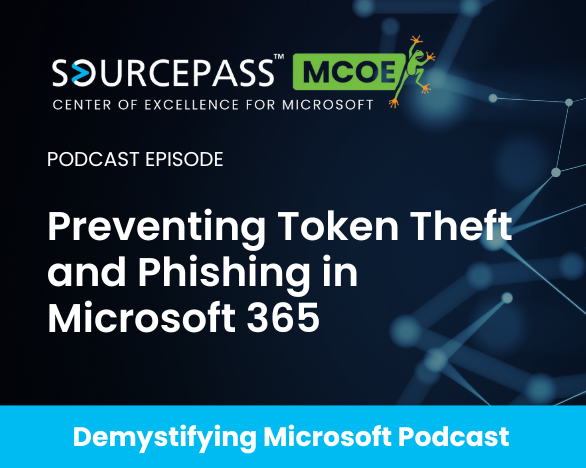6 min read
Microsoft Licensing Update: Windows 365 Cloud Apps Now in Preview
Microsoft’s Windows 365 Cloud Apps, now available in public preview, introduces a new way for organizations to deliver only the applications users...
2 min read
Keri LaRue : Jul 7, 2025 9:00:00 AM

Email remains one of the most common ways attackers gain access to organizations. DNS, SPF, DKIM, and DMARC serve as identity checks that verify whether an email truly comes from the sender it claims.
Microsoft provides tools that strengthen inbox protection and prevent unauthorized access.
In Part 3 of our Demystifying Microsoft podcast, we walk through Microsoft Defender for Office 365 and why modern protection requires API-based filtering, AI-powered analysis, and layered visibility tools.
And here’s the good news: it’s not just about blocking spam anymore. Microsoft’s email security stack uses AI, automation, and smart filtering that act more like a 24/7 bouncer, scanning every message, link, and attachment before allowing it into your digital “club.”
For decades, many businesses relied on MX-based filters, where all mail flowed through a third party before reaching the inbox. That approach worked when Exchange servers were hosted on-premises. Today, those filters can distort the identifying signals an email carries, interfering with modern security checks and increasing the risk of false positives or missed threats.
A cleaner approach is API-based filtering. Instead of rerouting all your mail through a middleman, the email flows directly to Microsoft, where protection layers run natively. This keeps the chain of custody intact, letting Microsoft’s advanced security features analyze messages with full context.
The centerpiece of Microsoft’s email protection is Defender for Office 365. It comes in two main plans: Plan 1 (P1) covers the essentials, while Plan 2 (P2) adds advanced features for organizations that require deeper defenses.
Here’s what makes it powerful:
While Defender is the foundation, email security isn’t just about blocking threats. It’s also about visibility and reporting. Tools like EasyDMARC give IT teams dashboards that show who’s trying to spoof your domain, which third-party tools are sending on your behalf, and why legitimate mail might be landing in junk folders. This kind of insight is critical when marketing teams spin up new SaaS tools without looping IT in.
Cybersecurity awareness training platforms like Finn and uSecure help meet insurance and compliance requirements while making training less painful for users. Instead of a single, dreaded annual training session, these platforms deliver short monthly modules that keep awareness fresh and reduce click rates on phishing attempts.
If earlier sections focused on verifying email identity, this one highlights the tools that make those protections actionable, including monitoring, alerting, and user awareness.
Every business running Microsoft 365 should deploy and properly configure Defender for Office 365 Plan 1 at minimum. Adding visibility tools such as EasyDMARC and awareness training platforms helps ensure your environment is secure in practice, not just on paper.
The next section will explore advanced standards including MTA-STS, DANE, and TLS reporting. These technologies represent the future of secure email transport and offer deeper protection for organizations ready to go beyond the basics.

6 min read
Microsoft’s Windows 365 Cloud Apps, now available in public preview, introduces a new way for organizations to deliver only the applications users...

5 min read
Microsoft has introduced a combined security and compliance add-on for Business Premium subscribers, delivering enterprise-grade protection and...

6 min read
Microsoft Purview Suite for Business Premium is a compliance add-on for Microsoft 365 Business Premium that delivers enterprise-grade data...

Attackers don’t just target users anymore. They exploit the gaps in the infrastructure that moves email across the internet. Encryption in transit...

Most IT leaders already know email is the primary attack vector. You see it every day through phishing attempts, spoofed domains, and impersonated...

Token theft and phishing attacks in Microsoft 365 are rapidly increasing, with over half of surveyed organizations experiencing a breach in the past...